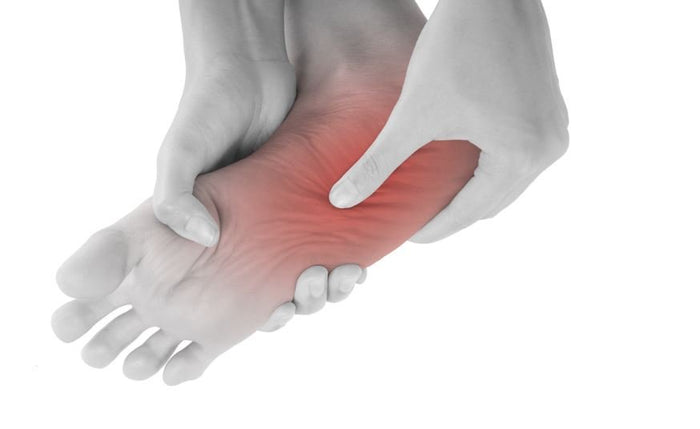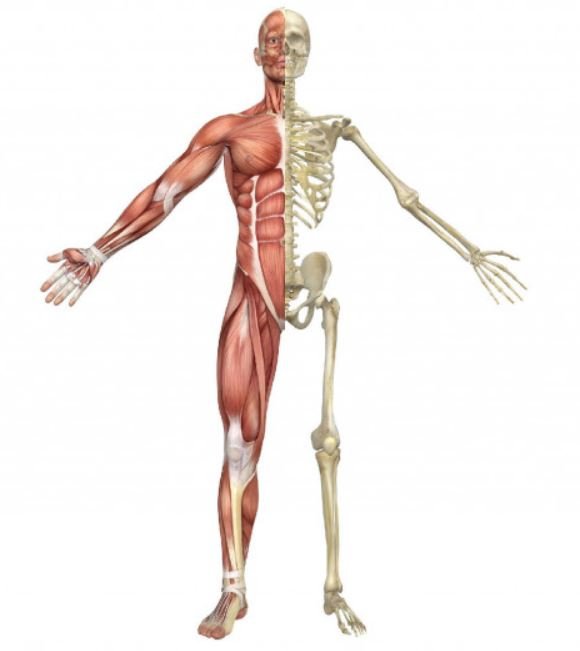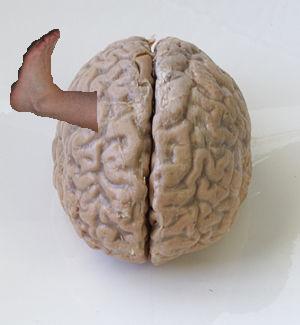Pain in Arch of Foot: Causes, Treatments & Stretches

Experiencing pain in the arch of your foot can be a debilitating and uncomfortable sensation. Whether it's a sharp, stabbing pain or a dull ache, foot arch pain can disrupt your daily life and limit your mobility. In this comprehensive guide, we'll explore the various causes of arch pain, effective treatments, the benefits of wearing insoles, and some helpful stretches to alleviate discomfort. By understanding the root causes and implementing the right strategies, you can take steps towards a pain-free life and keep your feet healthy and happy.
Causes of Arch Pain:
- Plantar Fasciitis: One of the most common culprits behind arch pain is plantar fasciitis. This condition occurs when the thick band of tissue (the plantar fascia) that connects the heel to the toes becomes inflamed (WebMD). This inflammation can result from overuse, improper footwear, or biomechanical issues.
- Flat Feet: Individuals with flat feet lack the natural arch support that others have. This lack of arch can lead to strain on the plantar fascia and result in arch pain. It's often hereditary but can also be caused or exacerbated by factors like obesity and pregnancy.
- High Arches: Conversely, people with high arches may also experience arch pain. High arches can lead to excess pressure on the ball and heel of the foot, causing discomfort and pain over time.
- Overuse or Strain: Engaging in activities that put excessive strain on the arch, such as long-distance running, can cause overuse injuries. Additionally, wearing unsupportive shoes can exacerbate arch strain (Healthline).
- Injury: Trauma to the arch of the foot, like a sprain or fracture, can result in pain and discomfort. These injuries often require immediate medical attention.
Treatments for Arch Pain:
- Rest and Ice: If your arch pain is due to overuse or a minor injury, resting your foot and applying ice can help reduce inflammation and provide relief (Cedars Sinai).
- Orthotic Insoles: Custom or over-the-counter orthotic insoles can provide crucial arch support and help distribute your weight evenly. These insoles can alleviate pain and improve your foot's biomechanics.
- Proper Footwear: Invest in shoes that provide adequate arch support and cushioning. Look for brands that specialize in comfort and support, and avoid high heels and unsupportive flats.
- Physical Therapy: Physical therapy can be highly effective in treating arch pain. A therapist can recommend exercises and stretches to strengthen the arch and improve flexibility.
- Anti-Inflammatory Medications: Nonsteroidal anti-inflammatory drugs (NSAIDs) can help manage pain and reduce inflammation. Consult a healthcare professional before using any medication.
Wearing Insoles for Arch Pain: Insoles, or orthotic inserts, are an excellent solution for managing and preventing arch pain. Here's why they're worth considering:
- Arch Support: Insoles are designed to provide targeted arch support. They help maintain the natural curvature of the foot, relieving strain on the plantar fascia.
- Customization: You can choose between custom-made orthotics prescribed by a podiatrist or over-the-counter options. Both offer varying levels of support to suit your needs.
- Improved Biomechanics: Insoles can correct alignment issues and improve your foot's biomechanics, reducing the risk of future arch pain.
- Versatility: Insoles can be used in a wide range of shoes, from athletic sneakers to dress shoes. This means you can enjoy the benefits of arch support in all aspects of your life.
- Pain Relief: Many individuals find immediate relief from arch pain when they start using insoles. The added cushioning and support can significantly reduce discomfort.
Effective Stretches for Arch Pain: Incorporating stretches into your daily routine can help alleviate arch pain and prevent its recurrence. Here are some effective stretches to try:
- Calf Stretch: Stand facing a wall, place your hands against it, and step one foot back. Keep the back leg straight, bend the front knee, and press your heel into the floor. You should feel a stretch in your calf and Achilles tendon.
- Towel Curl: Sit on a chair with your feet flat on the ground. Place a towel under your feet and use your toes to scrunch it up toward you. This exercise helps strengthen the muscles in your arch.
- Toe Stretch: Sit on the floor with your legs extended. Use your hands to gently pull your toes back towards you. Hold for 20-30 seconds to stretch the plantar fascia.
- Ankle Circles: While seated or lying down, make circles with your ankles in both directions. This simple exercise promotes flexibility and reduces stiffness.
- Marble Pick-Up: Place a few marbles on the floor and use your toes to pick them up and place them in a bowl. This strengthens the muscles in your arch.
Arch pain can be a real hindrance, but with the right knowledge and proactive measures, you can manage and even prevent it. Whether it's through rest, proper footwear, insoles, or regular stretching, taking care of your feet is essential for your overall well-being. If your arch pain persists despite these efforts, consult a healthcare professional for a more comprehensive evaluation and treatment plan. By addressing the root causes and incorporating these strategies, you can look forward to a future with fewer arch-related discomforts and more comfortable, pain-free steps.
Consider Wearing SelectFlex Adjustable Orthotics to Help Relieve your Arch Pain.
FOLLOW US










